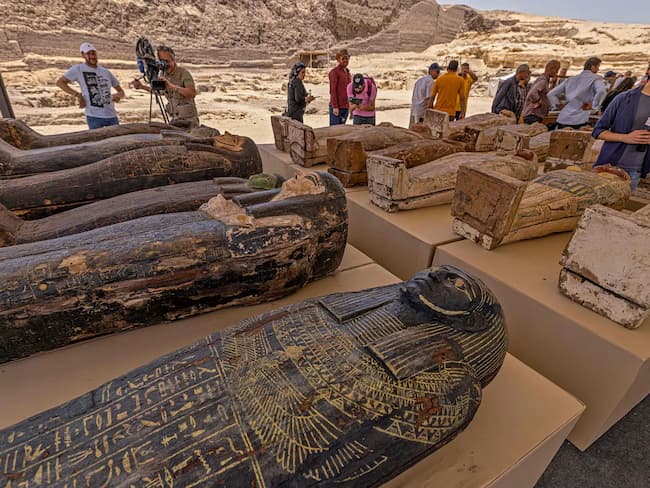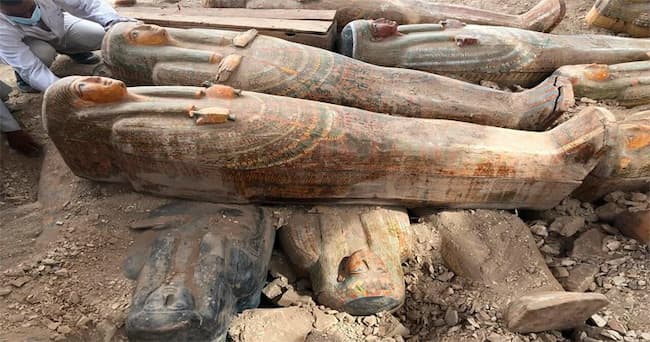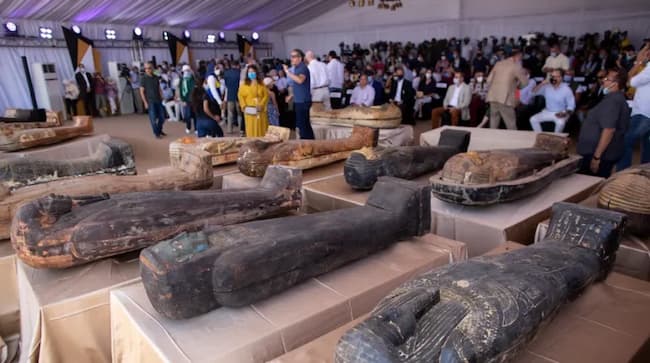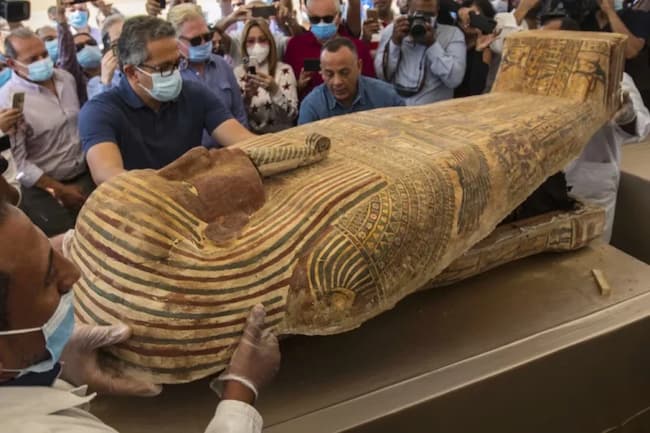In a recent archaeological discovery in Egypt, a team of archaeologists has unearthed 13 intact coffins from a burial shaft in Saqqara. The coffins are dated back to the Late Period of Egypt, around 2500 years ago. The discovery is a major one, as it provides new insights into the burial practices of the time and the lives of the people who were buried in the shaft.

The coffins were found in a well-preserved state, with their lids still intact. The coffins are made of wood and decorated with hieroglyphs and images of the deceased. The images depict the deceased people as they would have appeared in life, dressed in fine clothes and jewelry. The coffins also contain a variety of objects that were buried with the deceased, including amulets, figurines, and pottery.

The discovery of the coffins is a major one, as it provides new insights into the burial practices of the time and the lives of the people who were buried in the shaft. The coffins are also in a remarkably well-preserved state, which is rare for archaeological finds of this age. The discovery is a testament to the skill and dedication of the archaeologists who excavated the site.
The significance of the discovery
The discovery of the 13 intact coffins is a major one for several reasons. First, it provides new insights into the burial practices of the Late Period of Egypt. The coffins are decorated with hieroglyphs and images that provide clues about the beliefs and rituals of the time. For example, the images on the coffins often depict the deceased people as they would have appeared in life, dressed in fine clothes and jewelry. This suggests that the Egyptians believed that the afterlife would be a continuation of life on Earth.

Second, the discovery of the coffins provides new insights into the lives of the people who were buried in the shaft. The objects that were buried with the deceased, such as amulets, figurines, and pottery, provide clues about their social status and wealth. For example, the fact that the coffins were decorated with hieroglyphs and images suggests that the deceased people were of high status. The discovery of the coffins also provides new insights into the trade networks of the time, as some of the objects that were buried with the deceased were made from materials that were not native to Egypt.

Third, the discovery of the coffins is in a remarkably well-preserved state, which is rare for archaeological finds of this age. The coffins are made of wood and decorated with hieroglyphs and images that are still visible today. This is due to the dry climate of Egypt, which has helped to preserve the coffins for thousands of years.
The future of research
The discovery of the 13 intact coffins is a major one, and it is sure to generate further research into the Late Period of Egypt. The archaeologists who excavated the site are continuing to study the coffins and the objects that were buried with the deceased. They are also working to identify the deceased people and their families.
The discovery of the coffins is a reminder that there is still much that we don’t know about ancient Egypt. The country has a long and rich history, and there are still many archaeological sites that have yet to be excavated. The discovery of the coffins is a testament to the skill and dedication of the archaeologists who are working to uncover the mysteries of ancient Egypt.
Frequently Asked Questions:
- What is the significance of the discovery of the 13 intact coffins?
- What can we learn from the discovery of the coffins?
- What are the next steps for research into the Late Period of Egypt?
- What are the challenges that archaeologists face when excavating ancient sites?
- What are the ethical considerations involved in excavating and studying ancient sites?

